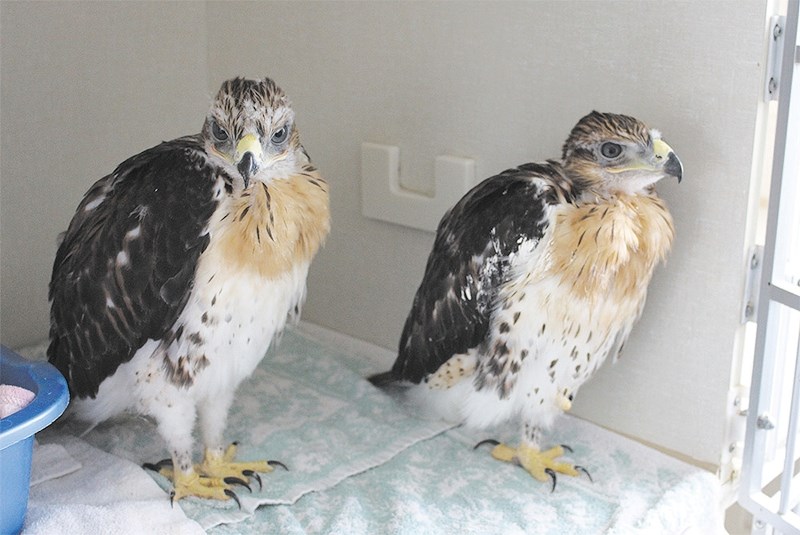A plan announced last month by the Alberta government will boost efforts to keep the ferruginous hawk a key part of the province’s ecosystem.
Known for flying and nesting over the southern grasslands, including here in the southwest, its population in the early 2000s dropped dangerously low, but has managed to rebound in the years since.
Environment Minister Rebecca Schulz announced Feb. 21 that the provincial government was releasing an updated recovery plan, building off the original 2014 initiative.
“Of course, we know this species is iconic in Alberta and the bird continues to be designated as endangered here in Alberta, which is why we updated this new and improved recovery plan,” said the minister in a conversation with Shootin’ the Breeze.
“What we’re looking at here, specifically, is addressing things like habitat loss, habitat disturbance, reduced nesting opportunities and making sure we’re actually increasing those nesting opportunities.”
The enhanced study also considers other mitigating factors like human impact and migration patterns of the bird.
Schulz said the previous recovery plan identified a short-term population goal, to get the average count to 800 pairs. That target was met in 2022.
“The plan has now moved to support a more ambitious and longer-term goal of 1,300 pairs for the recovery of the species,” she said.
“Our plan is multifaceted, reducing human disturbance, maintaining existing grassland and pasture lands, making sure there’s an adequate number of nests, and even looking at competing birds.”
One of the groups continuing to help the province is the Alberta Conservation Association, the minister acknowledging its importance in all of this.
The ACA “has been a long-standing and excellent partner of environmental protected areas, working with non-profits who really are so passionate about conservation and species at risk,” she said. “It makes all of the difference in the programs that we roll out.”
Brad Downey is the group’s senior biologist.
“A lot of our work we do involves working with land holders through stewardship programs out in the grasslands,” he said. “This hawk is one of our largest hawks in Canada and we do a lot of work with producers, just looking at ways to enhance or maintain the habitat.”
“This hawk is really tied to the grasslands and the cattle ranching that goes on out there. So, it’s very important to try to retain the grasslands that we have,” Downey explained.
Ranchers, he added, love this particular type of bird because it feasts on ground squirrels.
“So, we’re just looking at ways to ensure that those nesting sites out on the landscape actually remain there and encourage the species to flourish.”
To do that, with the permission of landowners, poles are erected to provide spots for nesting. Volunteers with companies like Fortis and AltaLink, who have the know-how, will help out during their off-hours, Downey said.
“A lot of these utility companies will be the ones that donate their time, come out with the equipment, install the pole for us and the platform on these properties.”
He figures over 40 poles are already installed across southern Alberta, but for now there’s a pause on adding more nests until more accurate data can be put together.



